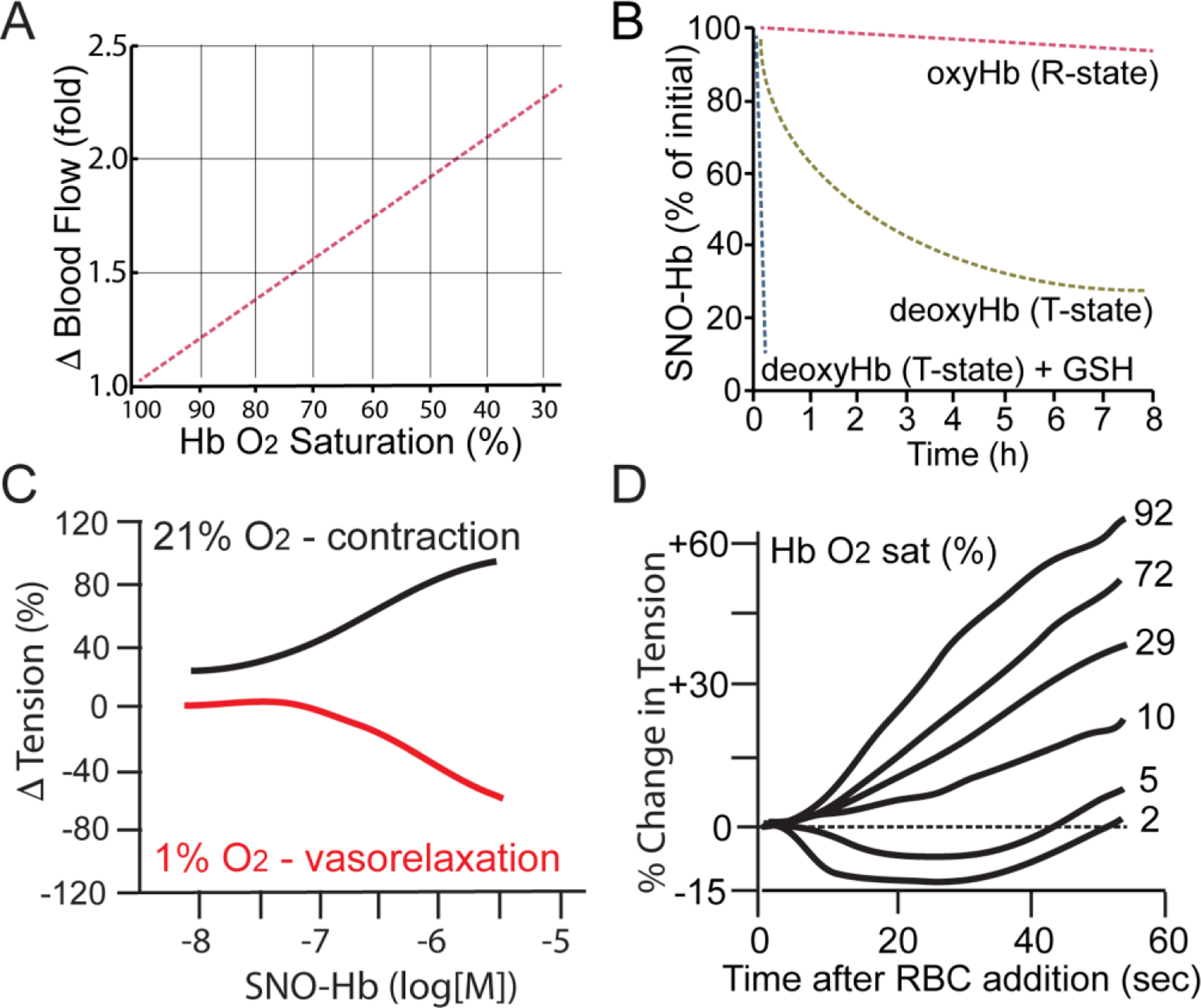Figure 1.

Role of allostery in hypoxic vasodilation. SNO-Hb mediates tissue blood flow increase in hypoxia in proportion to Hb deoxygenation (see also Figure 3). A. Limb blood flow increases linearly with decreasing oxygen saturation of the perfusing blood. Adapted from (Ross et al., 1962). B. Oxygenation-state allostery controls the reactivity of SNO-Hb. Isolated SNO-Hb in the oxygenated R-state is stable, but is destabilized and reactive in the in hypoxic T-state; loss of SNO from T-state Hb is potentiated by glutathione (GSH) serving as a SNO acceptor. Adapted from (Jia et al., 1996). C. SNO-Hb induces hypoxic vasodilation. Isolated SNO-Hb produces dose-dependent contraction of isolated aorta in an organ bath under room air (21% oxygen, black) but vasodilation under hypoxia (1% oxygen, red). Adapted from (McMahon et al., 2000). D. Human RBCs dilate blood vessels in proportion to Hb desaturation. Adapted from (McMahon et al., 2002).
